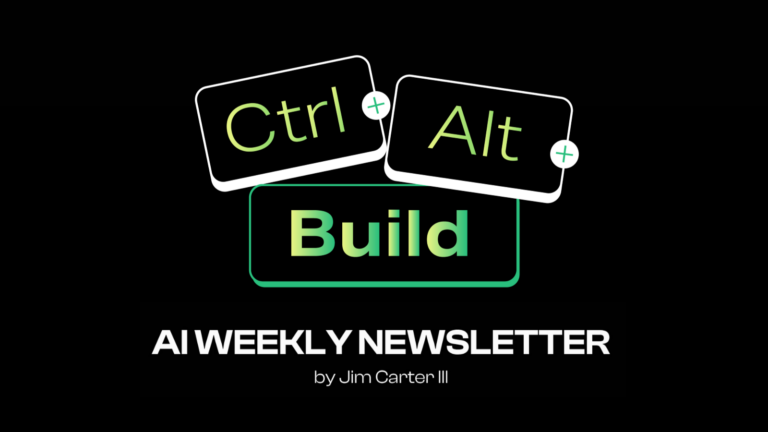01: Giving Voice Back Through AI

Researchers at UCSF and UC Berkeley developed a brain-computer interface (BCI) that gave a paralyzed woman named Ann her natural voice back for the first time in 18 years.
Ann was an active 30-year-old when a tragic brainstem stroke left her almost entirely paralyzed, able to move only small facial muscles. She lost the ability to speak, breathe freely, and care for her infant daughter overnight. It took tremendous effort for Ann to regain eye movement and subtle facial expressions over the years. But technologies over the years could not restore her voice – a fundamental part of human connection.
That changed when Ann joined a clinical trial using a BCI implanted in her brain. BCIs allow direct communication between the brain and an external device. Electrodes intercepted Ann’s brain signals intended for vocal muscles as she attempted speech internally. AI algorithms analyzed these patterns, translating them into Ann’s own voice after weeks of repetition and training.
Restoring a voice silenced by tragedy. Incredible. It’s hard to overstate how much this reclaims a sense of self and belonging.
For Ann, it means reconnecting with loved ones more naturally. Her perseverance shows the transformative impact AI and BCI tech can have by bridging gaps in human capacity.
🧠 For businesses, Ann’s experience highlights AI’s potential to enable communication for all. Imagine tools that make content accessible across languages or assist employees with disabilities. AI is creating a more inclusive future.
On a broader level, Ann’s story shows the power of combining cutting-edge technology with human resilience. Be bold and dream big – whether it’s boosting efficiency through automation or re-imagining how you engage with customers. With today’s rapid pace of AI advancement, remain open-minded to emerging tech and how it could transform human potential.
02: Level Up Your LinkedIn Content with AI

LinkedIn recently rolled out an AI-powered writing assistant that allows users to easily create post drafts using short text prompts.
We’ve likely all experienced writer’s block, staring at a blank page, struggling to transform an idea into a complete thought. Even more challenging is when we know it’s going to social media and will immediately be received and judged by our connections and followers. I’m excited to see LinkedIn pioneering this integration, being the first to implement it directly into their platform.
As Keren Baruch, LinkedIn’s Director of Product, explained: “We’ve heard that you generally know what you want to say, but going from a great idea to a full fledged post can be challenging and time consuming. So, we’re starting to test a way for members to use generative AI directly within the LinkedIn share box.” link 🔗
Here’s how it works:
First, you summarize your main point in a 30-word prompt. LinkedIn’s AI then generates a complete draft post for you to customize. As Baruch said, this allows members to quickly go “from a great idea to a full-fledged post.”
You retain complete creative control – the AI kickstarts the writing process. It’s impressive how it spins a basic prompt into a detailed, structured draft and is tuned for engagement on its platform.
🧠 With Microsoft leading in AI development, it makes sense for it’s LinkedIn platform to integrate these capabilities.
This milestone integration by LinkedIn paves the way for more user-friendly AI writing tools, with deep integrations into critical aspects of marketing. I’m eager to see it help boost productivity, creativity, and engagement across the platform.
Have you tried LinkedIn’s AI writer yet? I’d love to hear your thoughts on AI-assisted content creation.
03: GPT Finely Tuned

As quickly as AI advances and having countless tools that perform your tasks with minimal effort, there’s something uniquely desirable about one that doesn’t just perform a task but does so with a personal touch.
OpenAI’s latest enhancement to its GPT-3.5 Turbo model and the ability to fine-tune it is a testament to this evolution. Imagine an AI that doesn’t just respond but does so in a way that genuinely ‘gets’ you. It understands your quirks, aligns with your preferences, and even mirrors your brand’s distinct voice.
Personalization often comes with a hefty price tag. However, OpenAI has structured its pricing to be transparent and value-driven. There’s an initial training cost, followed by usage costs. To put it in perspective, fine-tuning a model with a training file of 100,000 tokens (approx. 75,000 words) for 3 epochs (training sessions) would cost just $2.40. It’s a small price for an experience that’s genuinely your own and that your developer can implement quickly.
🧠 Reflect on your brand’s identity. What makes you unique?
How can this AI update amplify that uniqueness, offering your customers an experience they won’t find elsewhere? Think about the opportunities of having your own “ChatGPT” that knows all about your own business, likes to write the way you do, and blends the power of everything else it already knows. Fine Tuning could be your next big move if you’ve been considering a big commitment to using GPT for your business.
